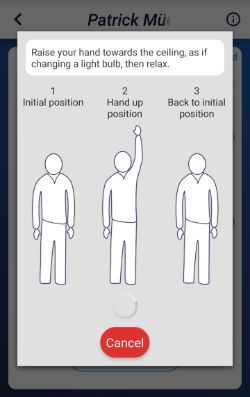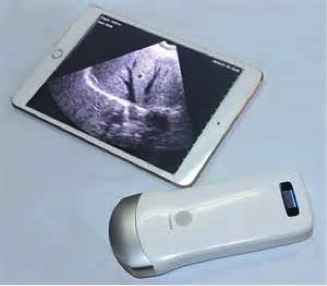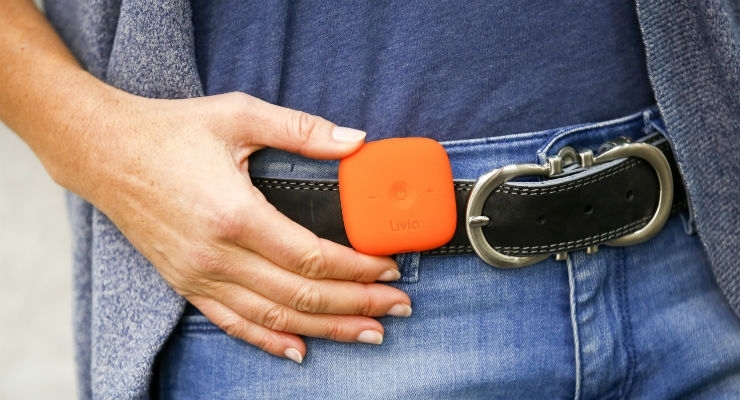Wearing Medical Innovation
By Michael Barbella, Managing Editor, and Sean Fenske, Editor | 11.21.16
The latest in medtech worn by patients, fitness advocates, or those addressing a specific symptom or medical condition.
There is plenty to see at the Medica and CompaMed shows each year, regardless of the specific medical technologies in which visitors are interested. One of the most consistent highlights, however, is the Wearable Technologies Pavilion in Hall 15. In this section, attendees get a glimpse at the latest in medtech being worn by patients, fitness advocates, or those seeking to address a specific symptom or medical condition.
While the medical advances in this area are a mix of development projects alongside actual retail products available in some areas of the world, almost everything is an interesting technology. MPO editors highlighted a few they found to stand out among the others.
Livia
Livia’s device sounds almost too good to be true: It relieves women's menstrual pain with the flick of a switch. The discreet wearable uses a set wavelength frequency to send neuroelectric pulses to the nervous system, blocking all pain signals from reaching the brain. The product’s frequency penetrates and soothes the uterine muscles causing menstrual cramps; those pain-blocking signals are then sent to the body’s central command system through tiny electrodes secured at the pain site(s).
“We are keeping the nervous system occupied with our signals so no pain can be felt,” Livia chief marketing officer John Pohl said from the Medica show floor. “Within 30 seconds, the pain is gone.”
Though the company’s device can be worn through the night if necessary, it is designed to keep its user pain-free for several hours after treatment. The product holds a charge for 15 hours and charges in about 80 minutes. Pohl said Livia has sold roughly 15,000 units globally since securing Indiegogo funding in April; the company is hoping to receive CE Mark approval for the device in January 2017 and U.S. Food and Drug Administration clearance in February.
HandsUp
Gait Up’s devices provide clinical-grade motion analysis through wearable sensors. The Swiss startup has developed IP-protected algorithms to quantify movement, monitor activity, analyze gait and running techniques, and measure shoulder kinematics. Its Run Up program provides analytics of running mechanics without calibration and helps athletes reach peak performance and allows trainers and therapists to observe historic trends or injury warnings. Physilog sensors, on the other hand, are designed to quantify human movement in real-life conditions.

The HandsUp mobile app provides validated shoulder angles and kinematic scores (B-B) using smartphone sensors.
The HandsUp mobile app provides validated shoulder angles and kinematic scores (B-B) using smartphone sensors. The app enables medical professionals to perform straightforward and valid functional shoulder tests to objectively measure and compare shoulder function, while patients can use it to track and share physical therapy progress. “It’s really targeted to physical therapists,” said Alex Russell, Gait Up’s vice president of business development.
Gait Up’s patented technology is the culmination of more than a dozen years of research and development with the Swiss Institute of Technology of Lausanne and other universities and scientific institutions. More than 50 customers in academics, clinics, and industry in Europe, Canada, Asia, and the United States use the services from the 3-year-old company.
Evena Medical
Evena was present in the Wearable Technologies venue in 2015 with its Eyes-On AR (augmented reality) Glasses, which enable clinicians to view deep tissue vascular images, such as the femoral vein and artery. While the company was hoping to present its latest version of the technology to Medica visitors this year, it came up a bit short. Instead, however, it presented another very impressive imaging solution—the DeepVu Personal Ultrasound.
While not a wearable itself, this one-button, handheld, wireless device offers every level of clinician the ability to use ultrasound imaging, requiring only the use of the device with a laptop or tablet. With the value ultrasound can offer in diagnosing a host of potential concerns, having this type of device available to first responders, midwives, remote doctors, and others lacking access to more sophisticated systems can make a significant difference in the quality of care.

The one-button, handheld, wireless device offers every level of clinician the ability to use ultrasound imaging, requiring only the use of the device with a laptop or tablet.
“Ultrasound is fast-becoming the most ubiquitous clinical tool in the medical profession, surpassing the stethoscope,” said Frank Ball, Evena Medical’s CEO. “With Evena’s wearable [ultrasound] and AR platform, doctors, nurses, and medics can quickly and easily view important patient imagery—even in challenging clinical environments such as emergency, surgical, or pre-hospital, or in more remote, underdeveloped parts of the world without access to advanced medical care.”
Perhaps at some point in the future, the company will find a way to couple the Eyes-On glasses with the DeepVu functionality, giving clinicians ultrasound imaging via the eyewear.
In 2017, it will be interesting to see how these and other technologies that were on display in the Wearable Technologies pavilion have continued to be developed, or the market’s impression of them. Perhaps more exciting will be the new entries to the pavilion making their debut at the event. Regardless, for those able to make the trip to Germany in November 2017 for Medica, be sure to check in to Hall 15 to see the latest wearable healthcare devices.
While the medical advances in this area are a mix of development projects alongside actual retail products available in some areas of the world, almost everything is an interesting technology. MPO editors highlighted a few they found to stand out among the others.
Livia
Livia’s device sounds almost too good to be true: It relieves women's menstrual pain with the flick of a switch. The discreet wearable uses a set wavelength frequency to send neuroelectric pulses to the nervous system, blocking all pain signals from reaching the brain. The product’s frequency penetrates and soothes the uterine muscles causing menstrual cramps; those pain-blocking signals are then sent to the body’s central command system through tiny electrodes secured at the pain site(s).
“We are keeping the nervous system occupied with our signals so no pain can be felt,” Livia chief marketing officer John Pohl said from the Medica show floor. “Within 30 seconds, the pain is gone.”
Though the company’s device can be worn through the night if necessary, it is designed to keep its user pain-free for several hours after treatment. The product holds a charge for 15 hours and charges in about 80 minutes. Pohl said Livia has sold roughly 15,000 units globally since securing Indiegogo funding in April; the company is hoping to receive CE Mark approval for the device in January 2017 and U.S. Food and Drug Administration clearance in February.
HandsUp
Gait Up’s devices provide clinical-grade motion analysis through wearable sensors. The Swiss startup has developed IP-protected algorithms to quantify movement, monitor activity, analyze gait and running techniques, and measure shoulder kinematics. Its Run Up program provides analytics of running mechanics without calibration and helps athletes reach peak performance and allows trainers and therapists to observe historic trends or injury warnings. Physilog sensors, on the other hand, are designed to quantify human movement in real-life conditions.

The HandsUp mobile app provides validated shoulder angles and kinematic scores (B-B) using smartphone sensors.
Gait Up’s patented technology is the culmination of more than a dozen years of research and development with the Swiss Institute of Technology of Lausanne and other universities and scientific institutions. More than 50 customers in academics, clinics, and industry in Europe, Canada, Asia, and the United States use the services from the 3-year-old company.
Evena Medical
Evena was present in the Wearable Technologies venue in 2015 with its Eyes-On AR (augmented reality) Glasses, which enable clinicians to view deep tissue vascular images, such as the femoral vein and artery. While the company was hoping to present its latest version of the technology to Medica visitors this year, it came up a bit short. Instead, however, it presented another very impressive imaging solution—the DeepVu Personal Ultrasound.
While not a wearable itself, this one-button, handheld, wireless device offers every level of clinician the ability to use ultrasound imaging, requiring only the use of the device with a laptop or tablet. With the value ultrasound can offer in diagnosing a host of potential concerns, having this type of device available to first responders, midwives, remote doctors, and others lacking access to more sophisticated systems can make a significant difference in the quality of care.

The one-button, handheld, wireless device offers every level of clinician the ability to use ultrasound imaging, requiring only the use of the device with a laptop or tablet.
Perhaps at some point in the future, the company will find a way to couple the Eyes-On glasses with the DeepVu functionality, giving clinicians ultrasound imaging via the eyewear.
In 2017, it will be interesting to see how these and other technologies that were on display in the Wearable Technologies pavilion have continued to be developed, or the market’s impression of them. Perhaps more exciting will be the new entries to the pavilion making their debut at the event. Regardless, for those able to make the trip to Germany in November 2017 for Medica, be sure to check in to Hall 15 to see the latest wearable healthcare devices.














